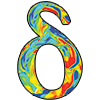SpaceClaim Training Course — Ep 01
Session 8
- Episode
- 01
- Run Time
- 14m 55s
- Published
- Oct 15, 2025
- Topic
- SpaceClaim
- Course Progress
- 0%
1. Overview
In this SpaceClaim tutorial session, you’ll explore some of the most practical modeling utilities. These include the Combine command and its associated tools such as Split Body, Split Face, and Project. We’ll also utilize the Create Plane command to generate new reference planes at desired locations. Using these tools in combination helps us create precise, functional geometries and implement necessary modifications to the model efficiently.
2. Combine Command
Generally, the concept underlying the Combine command is based on merging or subtracting existing bodies within a geometry. Dividing bodies in a model can prove beneficial in numerous situations, particularly in Computational Fluid Dynamics (CFD). For instance, in many analyses we prefer to execute the simulation in a periodic or symmetric fashion, since both the geometry and the solution follow a repeating pattern. Rather than solving the complete computational domain—which would substantially increase computational expense—we can simply divide or eliminate the repetitive or unnecessary portions of the geometry.
3. Split Body Command
In this tutorial, we examined how to divide two bodies using the Combine command. However, an alternative method exists to separate bodies from each other: the Split Body command. This command operates by enabling you to cut or partition bodies using a plane. The plane can be a flat surface selected from within the geometry itself, or a custom plane that you generate, such as a curved or inclined one. Examples of each scenario are demonstrated in this lesson to help you thoroughly understand how to utilize the Split Body command effectively in your modeling workflow.
4. Split Face Command
The Split Face command is introduced as a valuable tool for partitioning the surface of a body into distinct regions without cutting the body itself. With this command you can employ either an existing plane, an edge, a curve, or even a sketch to divide one or multiple faces of your geometry. This capability proves especially helpful when you need to apply different boundary conditions or mesh refinement controls on specific areas of a single surface in simulation, or when you want to establish new regions for additional modeling operations.
5. Project Command
The Project command is utilized to transfer or map curves, edges, or sketches from one surface or plane onto another. This tool enables you to create reference lines or shapes directly on curved or angled surfaces without manually reconstructing them. The projection can be executed in various ways such as normal projection, which transfers the geometry perpendicularly from the sketch plane onto the target surface, or directional projection, where you specify a particular direction for the projection to follow.
6. Session Summary
At the conclusion of this lesson you should be capable of using the tools you’ve mastered in this and previous sessions to efficiently modify your 3D geometries according to your computational requirements. You should now be proficient in merging or subtracting existing bodies using the Combine command, and applying the various options of the Split Body tool to separate or trim geometries at specific locations required by your simulation configuration.

